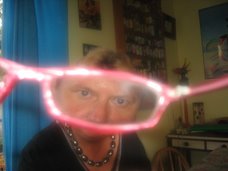Educating fresh young minds

TERRORISTS have planted bombs in an oil refinery in Singapore.
One explodes, pouring oil into the surrounding sea, endangering marine life and the beauty of this tropical place.
The rest of the bombs are ticking away and need to be defused, but it’s too dangerous for any human to enter the refinery site.
Instead, a crack team is charged with the task of sending in robots to deal with the bombs and mop up the oil.
The future of Singapore rests on the shoulders of these highly focused individuals.
They are just eight years old.
Thankfully, the scenario is fictitious.
But the Rulang Primary School students (pictured above, courtesy of Futurelab/Stakeholder Design) are making the robots, programming them and designing the computer software to direct them. They are also creating a communication plan to keep the “frightened” Singapore residents updated during the emergency and are also designing a business plan.
British science educator Sean McDougall says the year-long project is captivating the Rulang school students and the benefits will be obvious down the track.
“By the time they are 20 or 21, they will have a 10-year head start over children in the UK,” he says, during Efest, an online learning and technology conference held in Wellington, New Zealand, from June 25-27, 2007. McDougall (pictured, left) isn’t there in person, but he is live and telling jokes about his home city, Belfast in Northern Ireland.
McDougall (pictured, left) isn’t there in person, but he is live and telling jokes about his home city, Belfast in Northern Ireland.
Like a sci-fi movie come to life, the managing director of Stakeholder Design is sitting in London in front of a camera. This is filming him, while at the same time he is watching us on his screen.
We can hear him, see him, interact with him and vice versa. He even takes our photograph and we raise our arms and faces obligingly.
On our stage is another, bigger screen, which he also controls from London. This projects a mixed-media powerpoint presentation involving film, photographs, graphics, graphs, and anything visually enticing to do with education.
We see the students of Rulang school concentrating on their robots and are also delivered a pictorial history lesson.
On the big screen, McDougall zooms in on some of the educational exceptions, including one captivating students through the movement and magic of water.
At Luckwell Primary School in Bristol the students have been given the task of making an “intelligent fountain” for their school.
They have all been creating designs and thinking about how it could move, look, react, sound and change.
On screen, teacher Sarah Payton talks about how the youngsters have been delighted by the idea of a real partnership with the teachers in making something come to life.
“They were really, really excited about it… that what they had to say was as important as what the teachers had to say,” she says.
McDougall says that with support from Futurelab, a multi-column programmable fountain is being built at the school and should be squirting water by September.
“The fountain is being fitted with stereo microphones and motion detectors, so it will be able to watch and listen as people pass by,” he says.
It will act like a speed camera so if kids run past too fast the water will stop. It can be used as a vote counter, and will even star as the lead performer in a school production called The Magic Wishes, in which the fountain chooses to be able to see, hear and have feelings.
Before making the big step from design ideas to fountain, the children are taught to take small steps – or their prototypes are. As part of the process, the students all make inexpensive robots, many with crayon feet that draw as they move. These are called "drawbots" (pictured, courtesy of Futurelab/Stakeholder Design).

The “wows” are heard as small sighs of longing by the teachers and parents who fill the Wellington Town Hall.
After his presentation, McDougall directs an activity in New Zealand’s capital, where we are his own thinking robots, and then takes questions from the floor.
But I corner him afterwards, via the now-traditional means of email, to ask his involvement in the projects, beginning with the Singapore mission.
Q: Who devised this school project – was it yourself?
A: “I wish! Actually, it was devised by teachers at Rulang Primary School in Singapore, using Lego Mindstorms robot components.”
He has had more involvement at Luckwell.
Q: What is your role in this project?
A: “I came up with the idea and am facilitating the process of discovery and creation. This really is a learning journey that has helped people to come together and figure out what the future of teaching and learning might look like.”

No comments:
Post a Comment